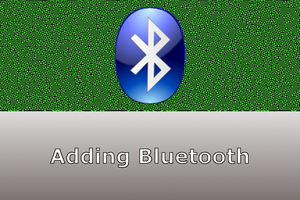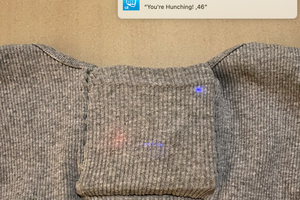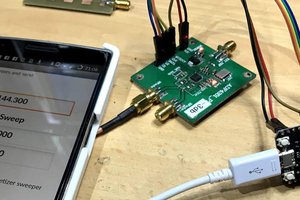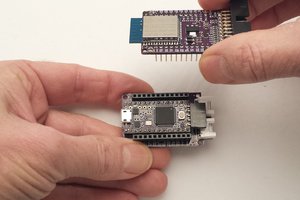The project is ready to enter the implementation phase. The I2C Test Board has been submitted to Oshpark for fabrication.
Project Notes:
Of the three non-cellular wireless technologies available on current mobile devices (wifi, Bluetooth Classic and Bluetooth Low Energy), BLE affords the most appropriate technology for portable and battery-powered operation. An important consideration as a primary responsibility of ham radio is public service communications in times of emergency when normal communications are not available--very often under conditions of wide-spread power outages. BLE was designed to minimize power consumption both in the target equipment and the companion mobile device.
Also, BLE is universally available to all recent mobile devices from a userspace app. In Apple's iOS, Bluetooth Classic is restricted to system space and requires participation in the mFI program.
The BLE wireless module preliminarily select for this project is the Lightblue "Bean" from punchthrough.com.
The hardware interface to the radio is trivial. 3.3 VDC and ground from the ChipKit Uno 32 microcontroller in the transceiver (the Ten-Tec transceiver Model 507) along with the two I2C lines and an output pin used to interrupt the host microprocessor. Two 4.7K ohm pull-up resistors complete the primary hardware.
The amateur transceiver design includes a MCP23017 with eight uncommitted i/o lines on its i2c buss. As part of this project, a hardware test board was designed to use these lines.
There is a software component for the BLE module and modification to the operational code for the transceiver is required. No smartphone app development will initially be necessary. The Lightblue app, free from the app store, will connect to the transceiver's embedded module and send I2C test messages as a BLE payload entered from the app's keyboard.
Security is not used on this project. No access to the keyline to initiate a transmission is possible--the primary security concern. Some incidental security is provided by the limited propagation distance. It is thought that the BLE signal will not propagate far beyond the metal transceiver chassis. One question to be answered is if the signal will propagate even a few meters using the unmodified chassis. It is anticipated that enough signal will "leak" through the chassis seams and alignment access ports for a controller operating within a few meters but not far beyond that.
A primary effort of this project will be to evaluate the in-band spurious radio emissions generated by the embedded BLE module over the operating range of the transceiver.
 bobh
bobh

 Mitch Sperry
Mitch Sperry

 Jose Luu
Jose Luu
 Pattern Agents
Pattern Agents
Looks good!
You might find my recent project interesting as our aligns closely with what you are doing here. It's a 70cm serial uart to WiFi bridge with integrated LCD.
https://hackaday.io/project/9937-70cm-serial-wifi-bridge
Basically I'm getting high power rocket telemetry via my 70cm transceiver and converting it over to a telnet session available over WiFi to my phone (or other IP devices). Specific messages can also be formatted to appear on the LCD for succinct messages.
I could easily add I2C (or other protocols) support also, but wasn't necessary.
Glad to see others taking the same leap.
Jeff
KC3EFJ